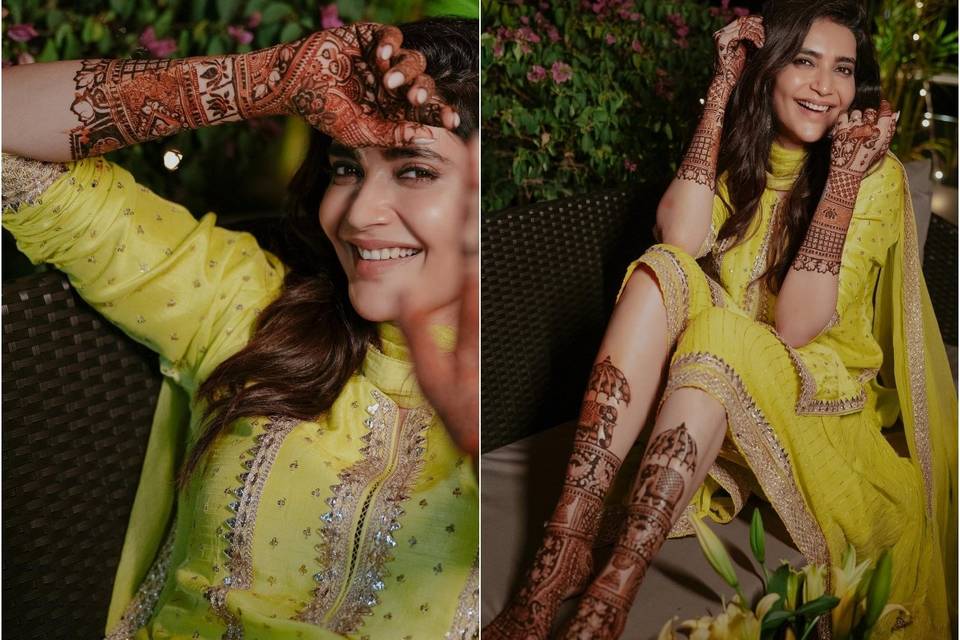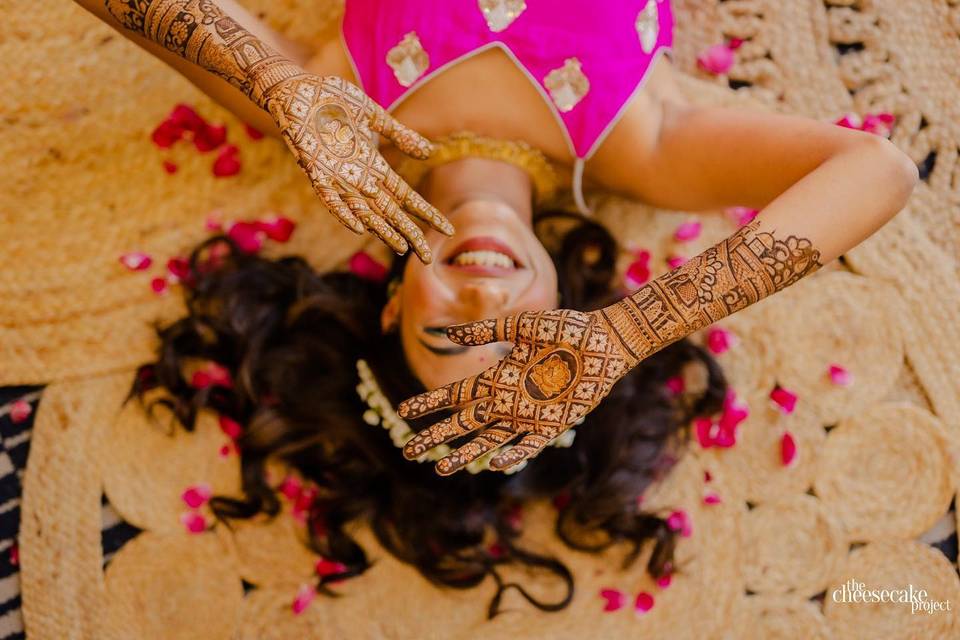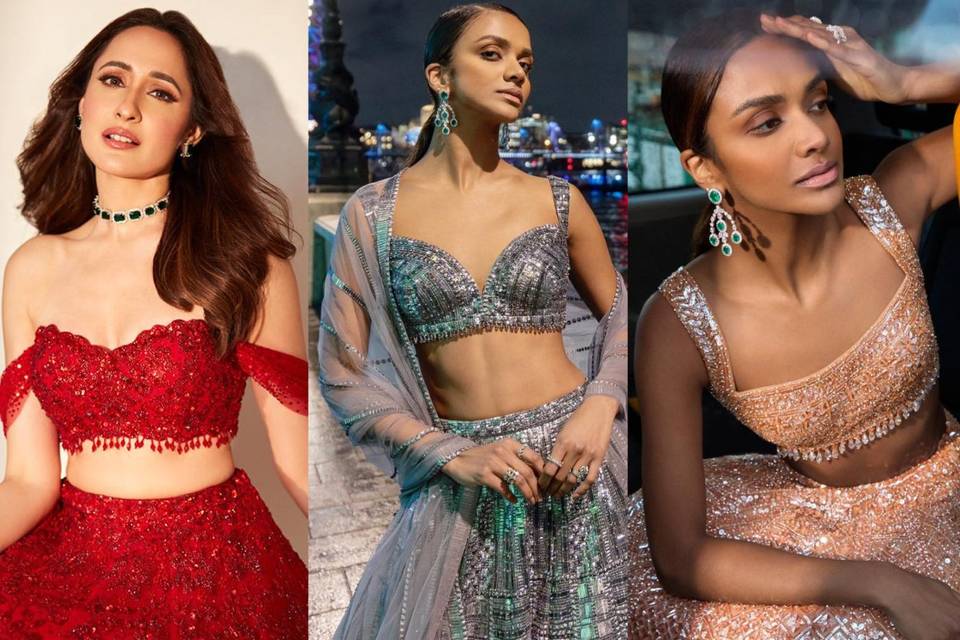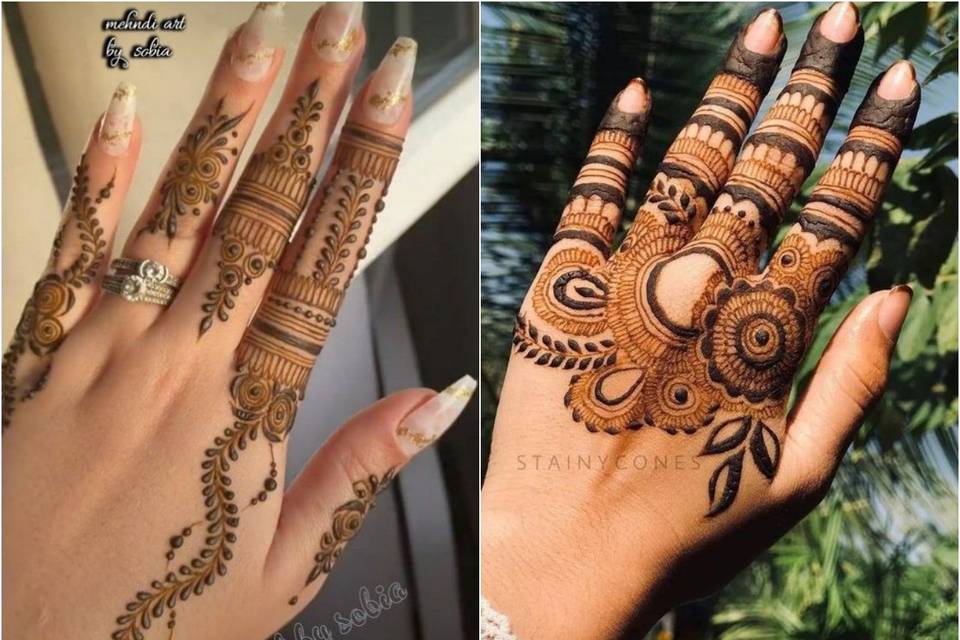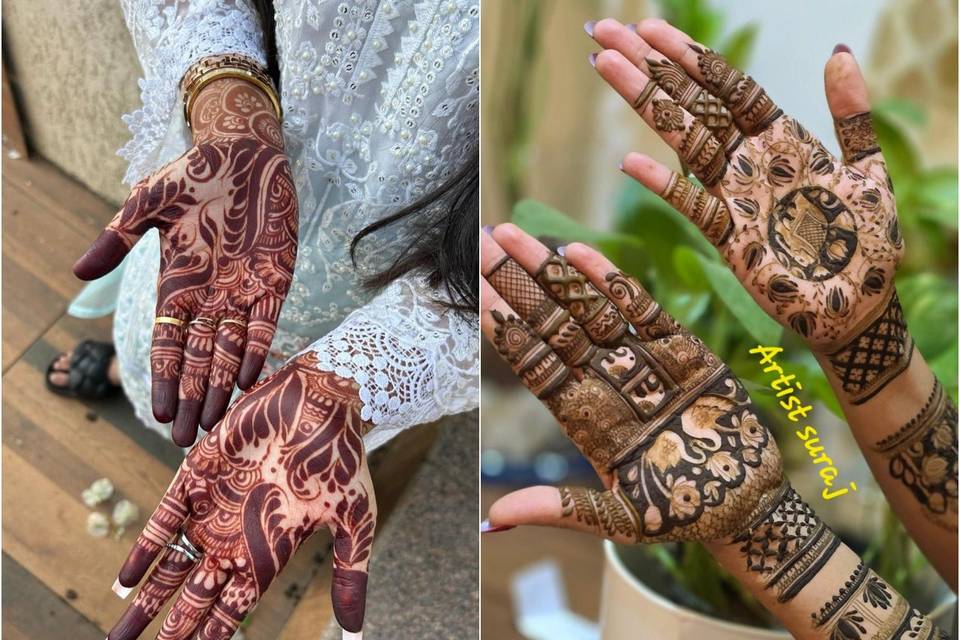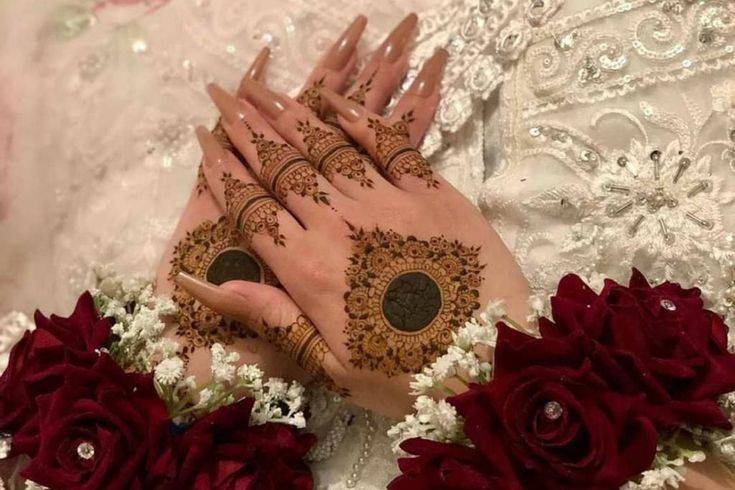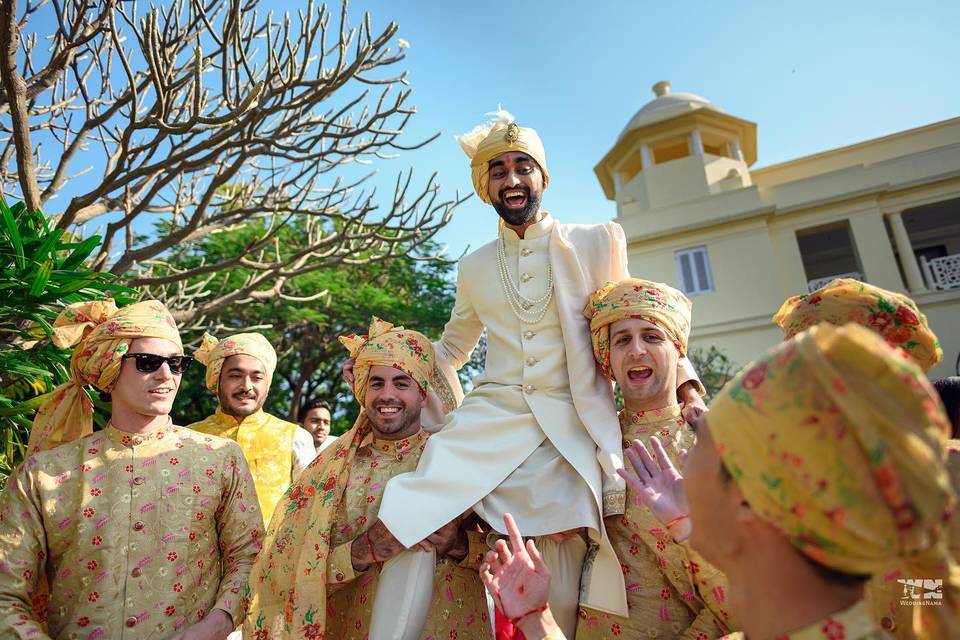5 Dreamlike Mukut Designs for the Queen Brides to Flaunt on the D-day
Every girl feels like a queen on her wedding day. These stunning Mukut designs will help her look the part too. Take inspiration from these real brides and slay!
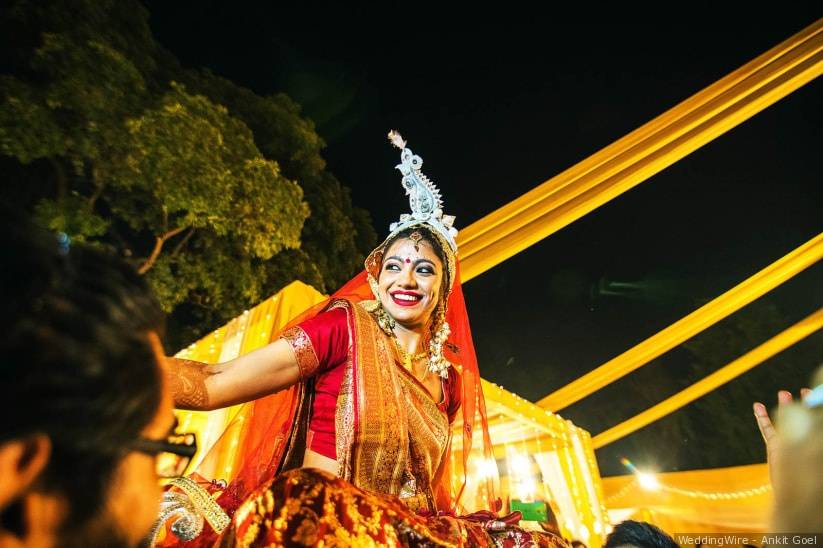
Every bride looks special in her own unique way on the wedding day. Her beauty, her glow of happiness, and her bridal outfit all when combined add up to it and her overall beauty. The bridal jewellery and attire you wear on your wedding day are unique. As diverse as Indian culture is, we can still find similarities in the traditions of each region. The mukut that the brides wear is also one of those many aspects.
The mukut is an essential part of a lot of bridal attires, in a number of different regions. It comes in many different shapes and sizes, and each one is as beautiful as the other. It adds the touch of your culture to the attire. The mukut makes the bride look elegant and distinguished, and sets her apart from all the other ladies around her.
Each region has it look different from the other and also made from different materials according to their heritage. So here we look at some of the most beautiful mukut designs that Indian brides adorn from different regions of India. Have a look at some of these mukut designs, since we rounded up some from different cultures and if you happen to be one from these communities, then get inspired to buy your very own design from these ornate looking mukut designs.
1. The Bengali Mukut or Topor

The Bengali headgear is known as the mukut, and sometimes the topor. For the Bengali bride, the mukut is a compulsory part of their attire and the one for the grooms are known as topor. It is known to bring good luck to the couple. It is made out of Sholapith/Indian cork, which is a white spongey plant matter. It is very fragile and requires to be handled with care. The mukut adorned by the bride is usually white in colour but can have complex designs on it by red paint, as red is also a very auspicious colour in the Bengali tradition. The Bengali mukut designs have intricately woven work, usually in white colour with silver sequined embellishments. It is a light headgear that the brides flaunt and they can adorn mukut designs made out of foam or thermocol sheets.
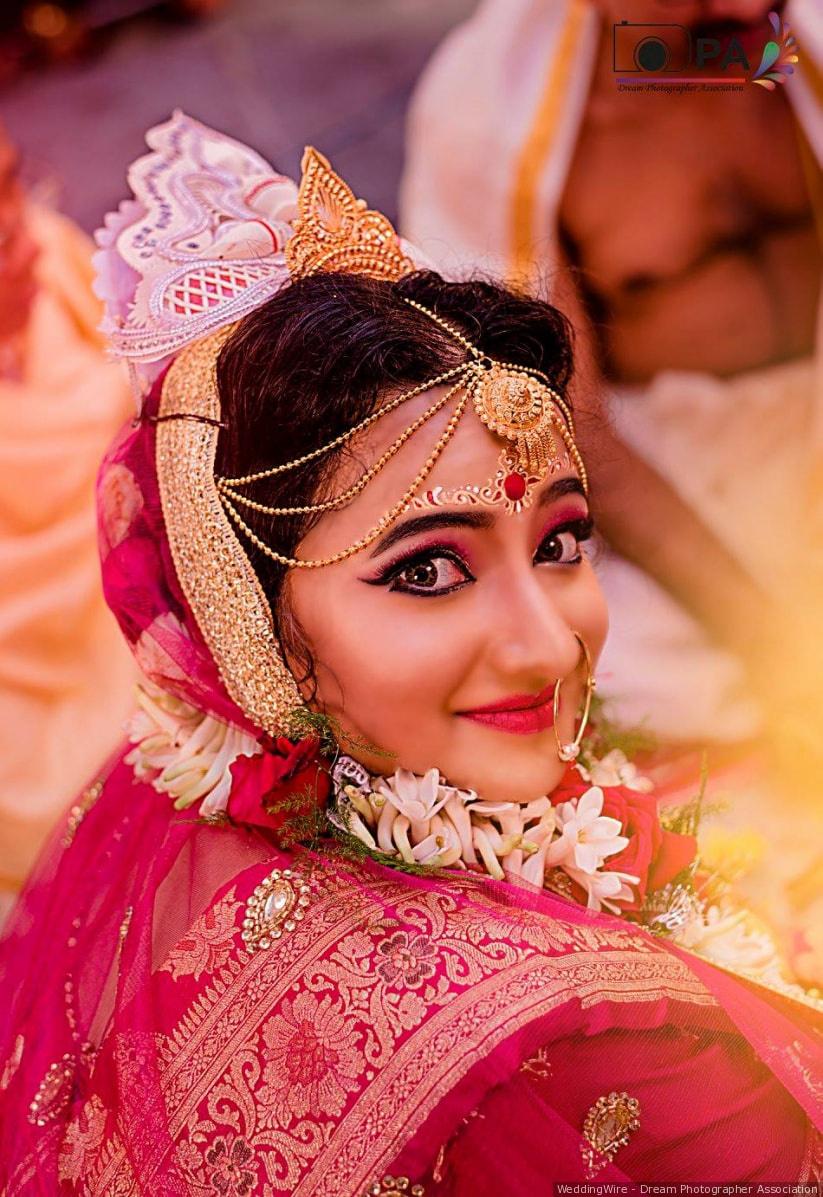
In today’s date, some Bengali brides also wear small gold mukuts with their white ones, so they wear the traditional ones just for the actual ceremony and change to the gold one later. You can also take inspiration from this post on how to get your Bengali makeup right if you want each and every element of your Bengali bridal look to be flawless and in point. The mukut designs are many and they play an essential part in the wedding games that happen between the bride and groom too.
2. Odia Mukut
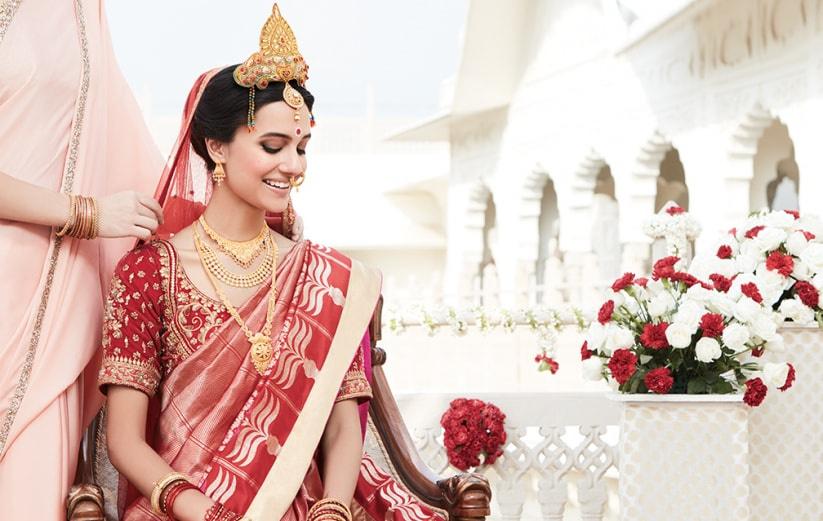
The mukut’s worn by an Odia bride is similar to the one worn in Bengal in appearance and in the manner that the real bride wears it on the top of her head. Though they are more diverse in designs and can even be more colourful if the bride wants, aesthetically the have the same appeal as a Topor. These mukuts are made of Sholapith and, are an important part of the tradition.
In Orissa, the bride and the groom usually wear similar mukuts for the ceremony. Odia mukut designs are a blend of intricate embroidery and stonework which acts as an embellishment on the base colour of the mukut. And, with a red colour saree, your mukut design is ought to make you look like a bridal charm. To be honest, the mukut designs also make you look like the queen on one of the biggest celebrations of your life.
3. Kashmiri Mukut or Kalpush

The Kashmiri version of the mukut or rather the Kalpush is something similar to a cap. It is folded 2-3 times and is lined with either cotton or silk. This cap then has a long, usually white, piece of cloth wrapped around it, which is known as the Zoojh. The entire headwear is then known as Tarang.
These mukut designs are very different from the other mukuts seen but just as beautiful. This headdress is argued to have both historical and religious importance to the women of Kashmir.) You can have a look at our Kashmiri Pandit Wedding article for more cues.
4. Marathi Mukut or Mundavalya
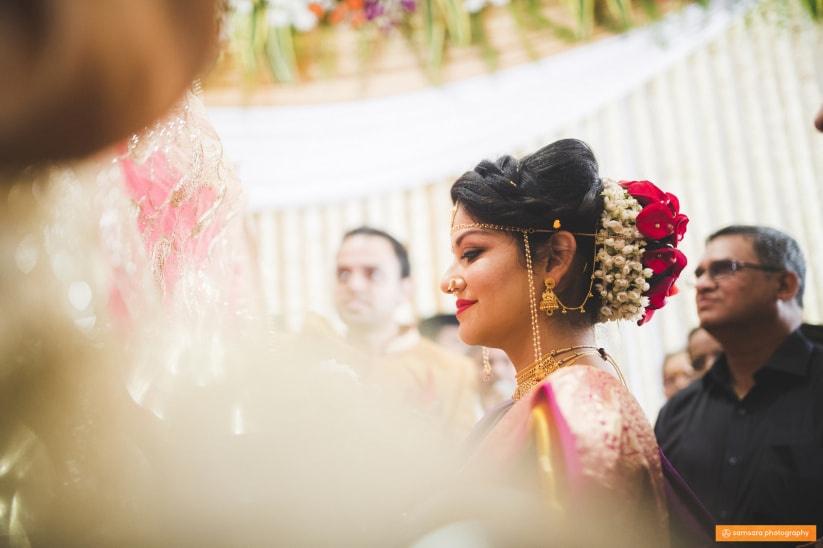
The Mundavalya is the Marathi version of the mukut worn by the brides in India. This is a much simpler design that looks very delicate too. It is made of two pearl strings hanging by the sides of the face, which are supposed to signify the bride and the groom, and is tied together at the forehead by strings of pearls. It is usually made out of strings of small pearls and flowers.
The bride wears this just before entering the mandap, as it indicates that the bride is ready for marriage, and is happily getting married. The Mundavalya is worn by both the bride and the groom.

Even with the mundavalya, people have started to come up with different designs and what it is made of, but the significance still remains the same. From tiny white pearl to a Swarovski band - the stones and beads used to design a Maharashtrian culture inspired mukut designs is impeccable and has a wide variety that will be like a treat for sore eyes.
5. Modern Day Tiara

We then also have the modern mukut or tiara. It has become a fairly common practice for brides to wear a tiara on their special day. It can be delicate or heavy, but it definitely adds to the overall look of the attire. This tiara can be made out of diamond, gold or even just flowers.

These stunning piece of jewellery will not only add more grace to your bridal look but also add distinct cultural value to your overall look. You'll be a symbol of your roots and traditions by adorning this intricate piece of jewellery. Now that you have seen some stunning looking mukut designs, which one will you pick for your own wedding ceremony?
Leave a comment to let us know about your personal favourites or share your experience with us through comments and snapshots.

